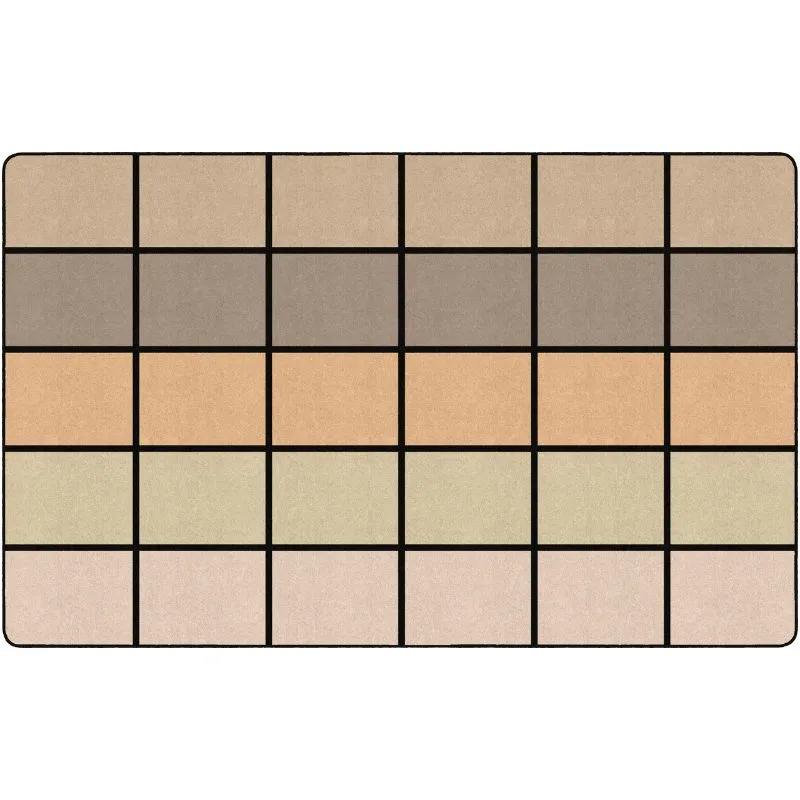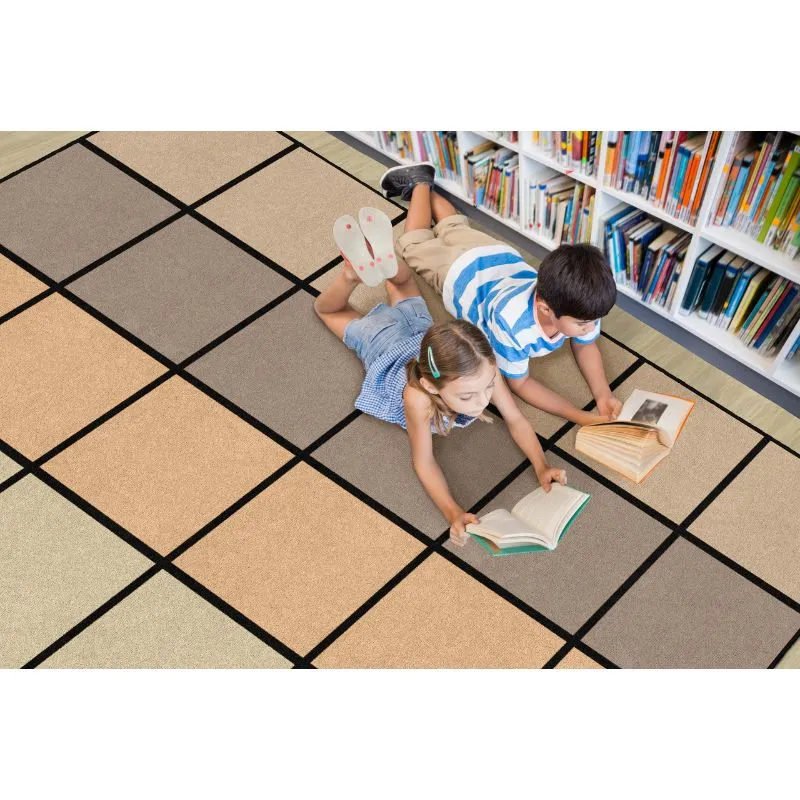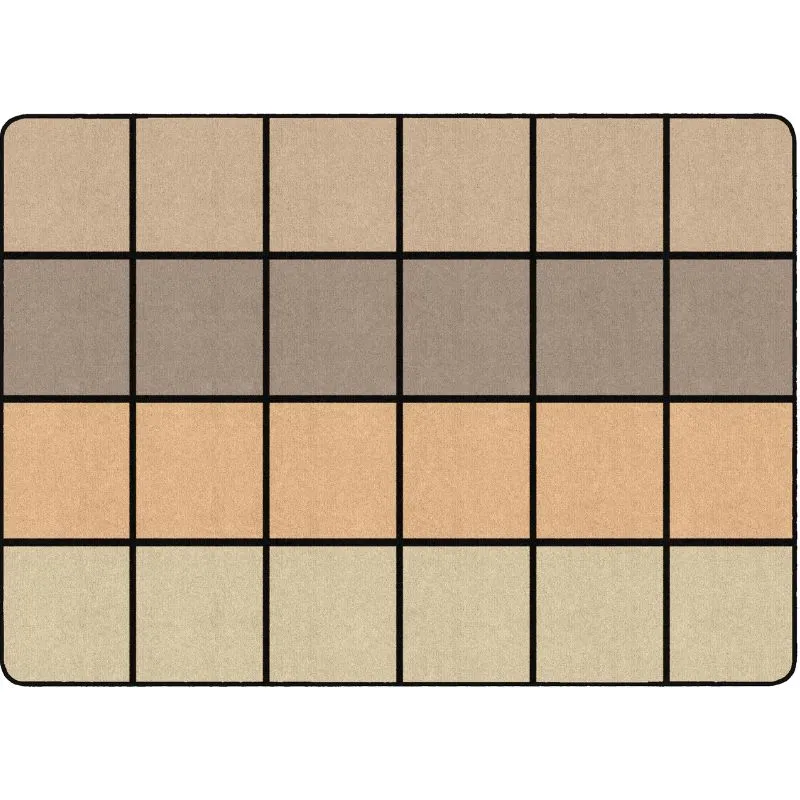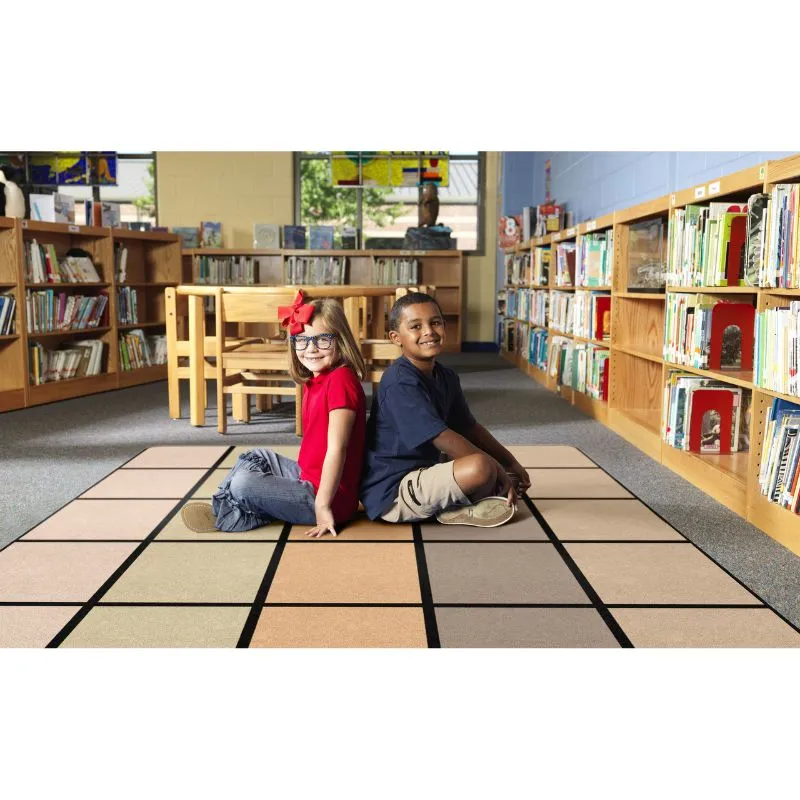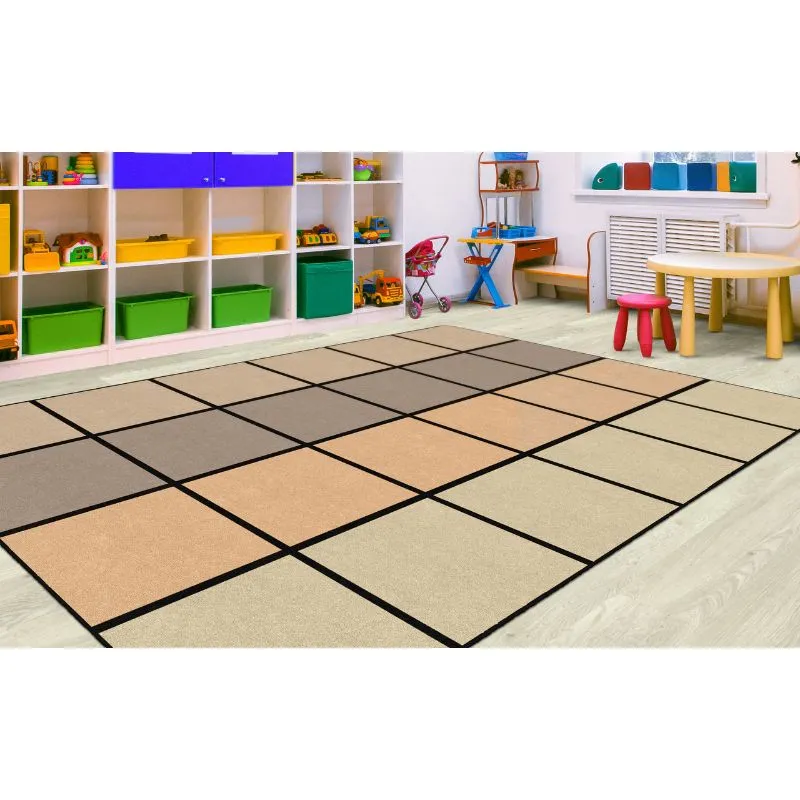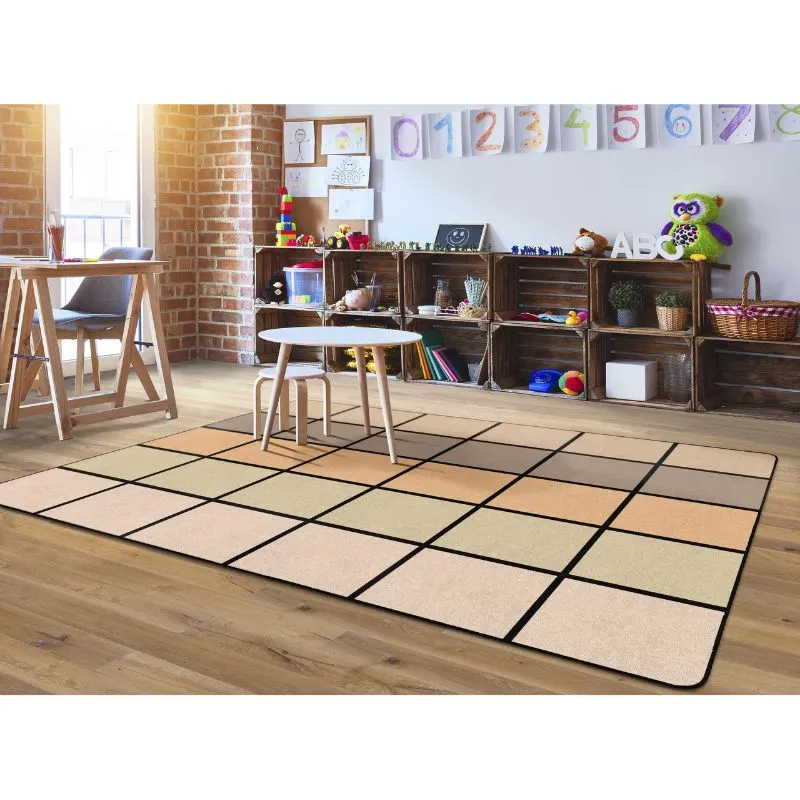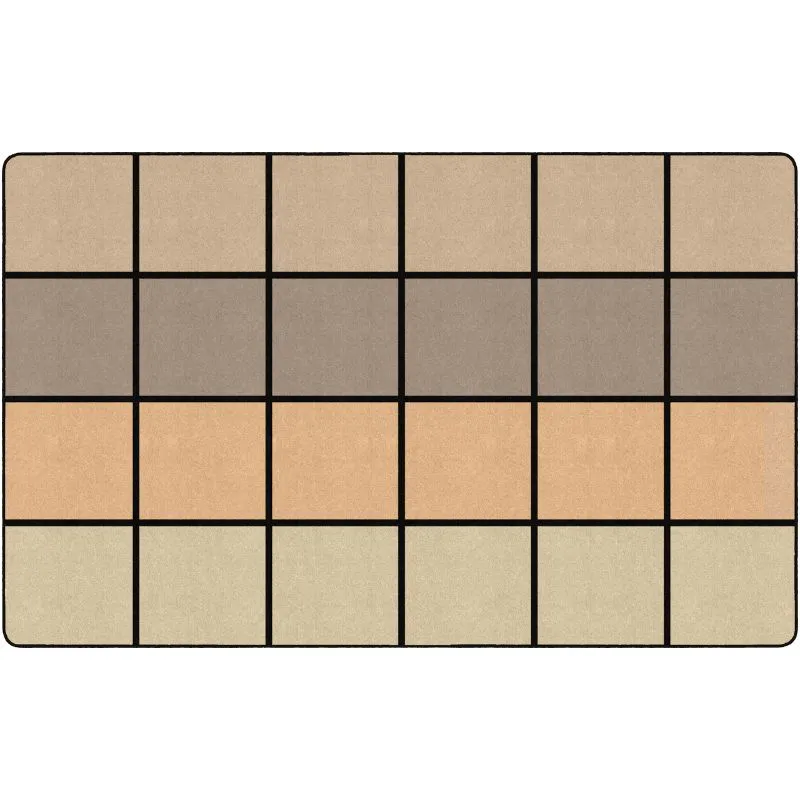Turn your classroom from frumpy to fabulous with our Desert Horizon Classroom Grid Seating Rug,. Create a serene oasis of learning. Crafted specifically for early education settings, this rugs blend soft beige, blush, and sandy tones reminiscent of a peaceful desert sunrise.
Please Measure Your Floor Space and Choose the Right Size
Light colors may show dirt from everyday foot traffic 👟
Sizes Available:
- 6' x 8'4" (24 Seats: 16.8" x 16")
- 7'6" x 12' (24 Seats: 22.5" x 21")
- 7'6" x 12' (30 Seats: 23.7" x 17.7")
Designed in a precise grid pattern, creates clearly defined seating spaces perfect for circle time, group activities, and floor fun.
Why Early Education Teachers Will Love Our Desert Sun Classroom Grid Rug:
Promotes Organization and Structure: The grid design effortlessly helps teachers manage seating arrangements, ensuring each child has their designated space. This structured layout supports classroom management strategies and teaches children about personal space boundaries.
Creates a Calm and Inviting Atmosphere: Warm, neutral colors establish a calming environment, reducing visual clutter and aiding young learners' focus. The serene palette fosters a nurturing and peaceful classroom ambiance.
Enhances Learning and Comfort: The plush, soft texture offers a comfortable surface for lessons, storytime, and play. Gentle colors visually soothe, contributing to a positive learning environment where children thrive.
Supports Educational Activities: The grid layout suits various educational activities, such as counting, letter recognition, and color sorting games. It seamlessly integrates into lesson plans, making learning interactive and enjoyable.
Additional Features:
- Treated with Scotchgard protector for superior soil resistance.
- 24 oz Nylon with Urethane Backing System.
- Class I Flammability Rating and Indoor Air Quality passed.
- Bound and double-stitched with nylon edge yarn for maximum strength.
- Flagship stain and CRI labels.
- Proudly made in the USA.
More than a classroom accessory, our Desert Horizon Classroom Grid Rug serves as a captivating centerpiece for a vibrant and engaging learning environment.
Deserts are among the most captivating and misunderstood ecosystems on our planet. Often portrayed as barren wastelands, these arid landscapes are actually teeming with life and filled with natural wonders.
What Makes a Desert?
By definition, a desert is an area that receives very little precipitation – typically less than 10 inches of rain annually. But deserts are far more complex than just dry places. They are characterized by extreme temperatures, sparse vegetation, and often sandy or rocky terrain.
Deserts cover approximately one-third of the Earth's land surface and can be found on every continent except Europe. They come in various types:
- Hot and dry deserts (like the Sahara)
- Semi-arid deserts (like the Sonoran Desert)
- Coastal deserts (like the Atacama Desert)
- Cold deserts (like the Gobi Desert)
Each type has its unique features, but all share the common challenge of water scarcity.
Despite the harsh conditions, deserts are home to a surprising variety of plant and animal life. These organisms have evolved remarkable adaptations to survive in an environment where water is scarce and temperatures can fluctuate wildly.
Desert Plants: Plants like cacti and succulents have developed thick, waxy skin to minimize water loss. Some plants have deep root systems to tap into underground water sources, while others have leaves that can fold to reduce surface area and water loss.
Desert Animals: Animals in the desert have equally impressive adaptations. Many are nocturnal, avoiding the scorching daytime heat. Others, like the kangaroo rat, can survive without ever drinking water, obtaining all the moisture they need from their food.
Camels, the iconic desert dwellers, can go for long periods without water and have specialized blood cells that continue to flow even when thickened by dehydration.
While deserts might appear lifeless at first glance, they play a crucial role in the global ecosystem. Here are some key aspects of desert ecology:
- Biodiversity: Deserts are home to many unique species found nowhere else on Earth. The isolation and extreme conditions have led to the evolution of highly specialized organisms.
- Carbon Sequestration: Desert soils and vegetation, though sparse, play a role in carbon sequestration, helping to mitigate climate change.
- Cultural Significance: Many deserts have profound cultural and historical importance, having shaped human civilizations for thousands of years.
- Scientific Research: Deserts provide valuable insights into climate change, adaptation, and the limits of life, making them important sites for scientific study.
Conserving desert ecosystems is crucial for several reasons:
- Biodiversity: Deserts host unique species that contribute to global biodiversity.
- Climate Regulation: Healthy desert ecosystems play a role in regional and global climate patterns.
- Cultural Heritage: Many indigenous cultures are deeply connected to desert landscapes.
- Scientific Value: Deserts offer invaluable opportunities for scientific research, from biology to astronomy.
- Economic Value: Many deserts contain important natural resources and support local economies through tourism.
Deserts are far more than just empty, lifeless places. They are complex ecosystems filled with resilient life forms that have found ingenious ways to thrive in one of Earth's most challenging environments.
From the towering sand dunes of the Sahara to the stark beauty of the Atacama, deserts remind us of nature's incredible adaptability and the delicate balance of life on our planet.
By appreciating the hidden beauty and vital role of deserts, we can work towards a future where these unique landscapes continue to inspire, teach, and sustain life for generations to come.




